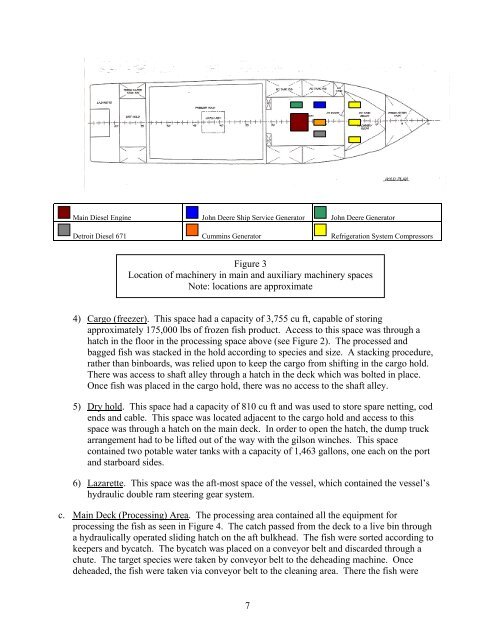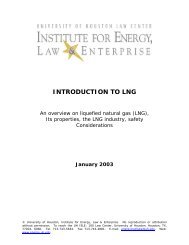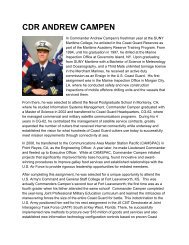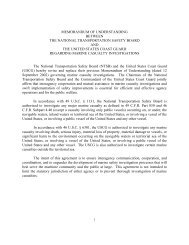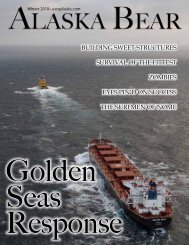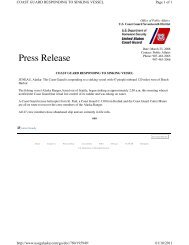marine board report - Off Soundings
marine board report - Off Soundings
marine board report - Off Soundings
Create successful ePaper yourself
Turn your PDF publications into a flip-book with our unique Google optimized e-Paper software.
Main Diesel Engine John Deere Ship Service Generator John Deere Generator<br />
Detroit Diesel 671 Cummins Generator Refrigeration System Compressors<br />
Figure 3<br />
Location of machinery in main and auxiliary machinery spaces<br />
Note: locations are approximate<br />
4) Cargo (freezer). This space had a capacity of 3,755 cu ft, capable of storing<br />
approximately 175,000 lbs of frozen fish product. Access to this space was through a<br />
hatch in the floor in the processing space above (see Figure 2). The processed and<br />
bagged fish was stacked in the hold according to species and size. A stacking procedure,<br />
rather than bin<strong>board</strong>s, was relied upon to keep the cargo from shifting in the cargo hold.<br />
There was access to shaft alley through a hatch in the deck which was bolted in place.<br />
Once fish was placed in the cargo hold, there was no access to the shaft alley.<br />
5) Dry hold. This space had a capacity of 810 cu ft and was used to store spare netting, cod<br />
ends and cable. This space was located adjacent to the cargo hold and access to this<br />
space was through a hatch on the main deck. In order to open the hatch, the dump truck<br />
arrangement had to be lifted out of the way with the gilson winches. This space<br />
contained two potable water tanks with a capacity of 1,463 gallons, one each on the port<br />
and star<strong>board</strong> sides.<br />
6) Lazarette. This space was the aft-most space of the vessel, which contained the vessel’s<br />
hydraulic double ram steering gear system.<br />
c. Main Deck (Processing) Area. The processing area contained all the equipment for<br />
processing the fish as seen in Figure 4. The catch passed from the deck to a live bin through<br />
a hydraulically operated sliding hatch on the aft bulkhead. The fish were sorted according to<br />
keepers and bycatch. The bycatch was placed on a conveyor belt and discarded through a<br />
chute. The target species were taken by conveyor belt to the deheading machine. Once<br />
deheaded, the fish were taken via conveyor belt to the cleaning area. There the fish were<br />
7


